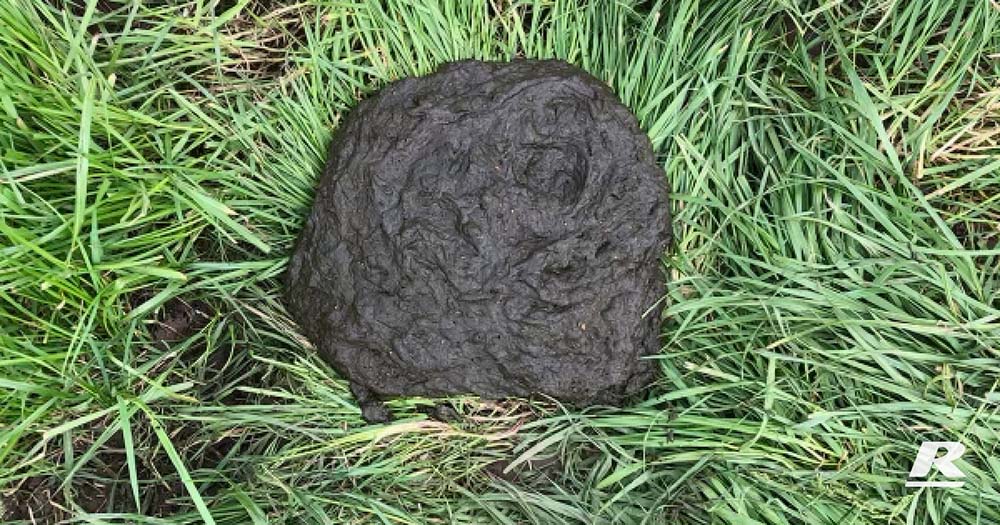Understanding Manure: What Poo can tell you?
Knowing what to look for in a dairy cow’s manure (…. or poo) provides an understanding into what may be impacting on the animal’s health and gives insights as to whether the animal’s condition is normal, or whether any treatment or special diet is required. We recommend looking at three different aspects on an ongoing basis, which for ease of remembering we refer to as “The 3 C’s” – these being Consistency, Colour and Content.
Here’s what to look for:
Consistency
Ideally, the manure of a dairy cow should be porridge-like in consistency. It should be dome-shaped and around 2-5cm in thickness.
Manure which is firmer and thicker than this often indicates dehydration and a lack of protein in the diet. Manure which is loose may indicate excessive rumen degradable protein, and may be indicating a number of health issues, including in extreme cases sub-acute ruminal acidosis.
Colour
Colour is influenced by a range of factors including feed type, rate of passage, bile concentration and health disorders.
When cattle graze fresh forage, manure is dark green and darkens to a brown-olive when animals are fed hay. On a total mixed ration (TMR), the manure is usually a yellow-olive colour because of the combination of grain and forage and varies depending on the amount eaten.
Dark or bloody manure may indicate haemorrhaging in the GIT potentially from a range of issues including mycotoxins and coccidiosis. Grey manure is often associated with diarrhoea. A watery yellow/light green can result from bacterial infections such as salmonella.
Any animal that has a significantly different manure colour to the rest of the herd should be investigated.
Content
There are several things to look for in the manure to decipher if the diet is balanced.
Identifiable pieces of undigested feed indicates that the rate of passage is too fast and that feed is not being retained long enough to be digested. Bubbles in the manure indicates either lactic acidosis or excess hindgut fermentation meaning nutrients are often being excreted. Mucus indicates that there is inflammation or that an injury has occurred on the gut wall in particular in the large intestine – often as a result of lactic acidosis.
Summary
In conclusion, it is important to understand what normal looks like for the diet being fed. Applying “The 3 C’s” allows you to identify any variations and to not underestimate the answers.
To increase your livestock farming gains & expert nutritional feeding advice please call 1300 REID FEED or enquire here >
Author
Tom Fitzgerald
Account Manager – Ruminant
